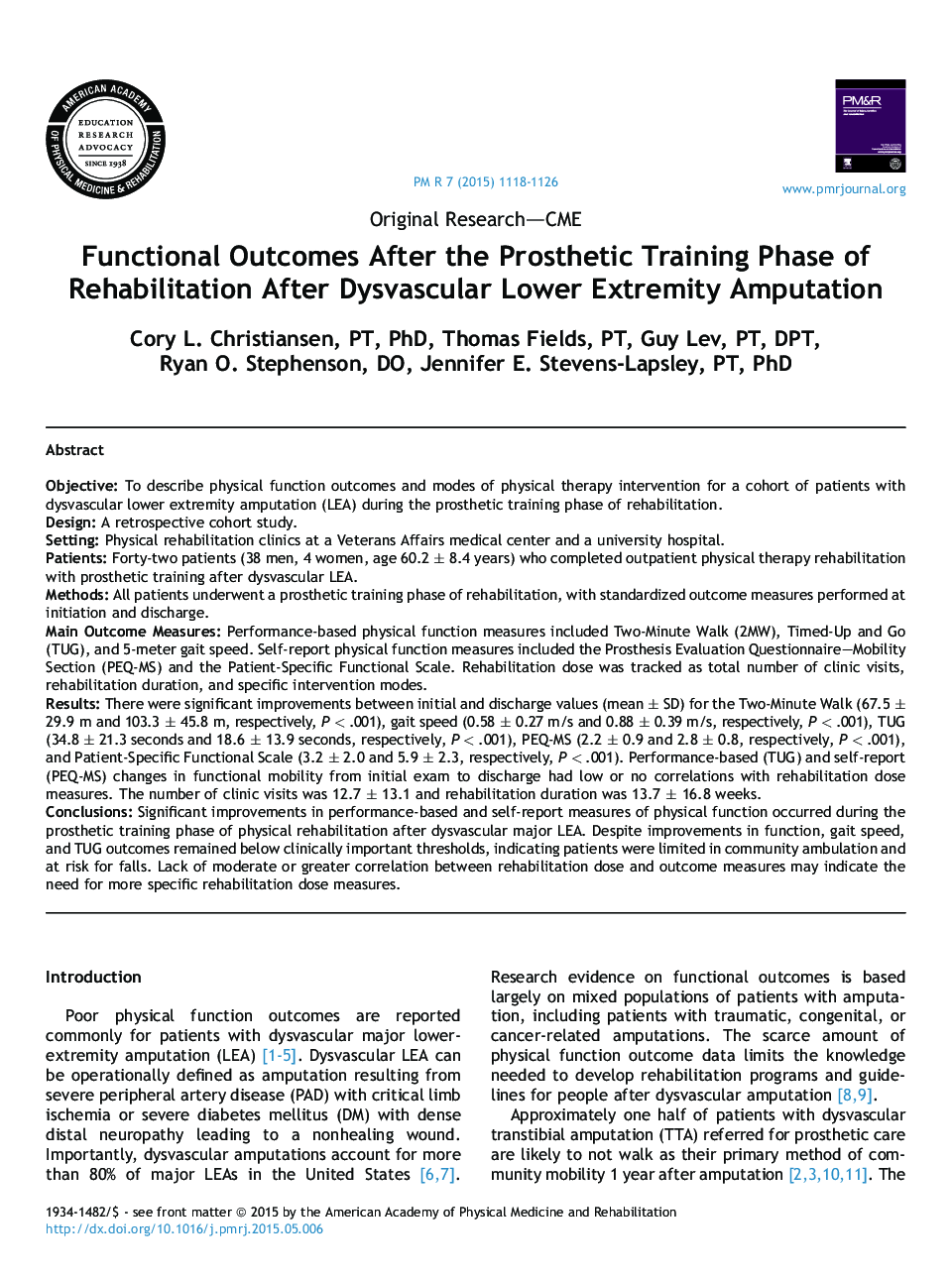| کد مقاله | کد نشریه | سال انتشار | مقاله انگلیسی | نسخه تمام متن |
|---|---|---|---|---|
| 2705132 | 1144729 | 2015 | 9 صفحه PDF | دانلود رایگان |
ObjectiveTo describe physical function outcomes and modes of physical therapy intervention for a cohort of patients with dysvascular lower extremity amputation (LEA) during the prosthetic training phase of rehabilitation.DesignA retrospective cohort study.SettingPhysical rehabilitation clinics at a Veterans Affairs medical center and a university hospital.PatientsForty-two patients (38 men, 4 women, age 60.2 ± 8.4 years) who completed outpatient physical therapy rehabilitation with prosthetic training after dysvascular LEA.MethodsAll patients underwent a prosthetic training phase of rehabilitation, with standardized outcome measures performed at initiation and discharge.Main Outcome MeasuresPerformance-based physical function measures included Two-Minute Walk (2MW), Timed-Up and Go (TUG), and 5-meter gait speed. Self-report physical function measures included the Prosthesis Evaluation Questionnaire–Mobility Section (PEQ-MS) and the Patient-Specific Functional Scale. Rehabilitation dose was tracked as total number of clinic visits, rehabilitation duration, and specific intervention modes.ResultsThere were significant improvements between initial and discharge values (mean ± SD) for the Two-Minute Walk (67.5 ± 29.9 m and 103.3 ± 45.8 m, respectively, P < .001), gait speed (0.58 ± 0.27 m/s and 0.88 ± 0.39 m/s, respectively, P < .001), TUG (34.8 ± 21.3 seconds and 18.6 ± 13.9 seconds, respectively, P < .001), PEQ-MS (2.2 ± 0.9 and 2.8 ± 0.8, respectively, P < .001), and Patient-Specific Functional Scale (3.2 ± 2.0 and 5.9 ± 2.3, respectively, P < .001). Performance-based (TUG) and self-report (PEQ-MS) changes in functional mobility from initial exam to discharge had low or no correlations with rehabilitation dose measures. The number of clinic visits was 12.7 ± 13.1 and rehabilitation duration was 13.7 ± 16.8 weeks.ConclusionsSignificant improvements in performance-based and self-report measures of physical function occurred during the prosthetic training phase of physical rehabilitation after dysvascular major LEA. Despite improvements in function, gait speed, and TUG outcomes remained below clinically important thresholds, indicating patients were limited in community ambulation and at risk for falls. Lack of moderate or greater correlation between rehabilitation dose and outcome measures may indicate the need for more specific rehabilitation dose measures.
Journal: PM&R - Volume 7, Issue 11, November 2015, Pages 1118–1126
